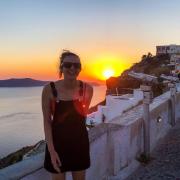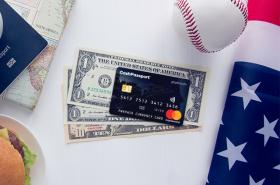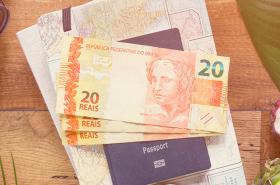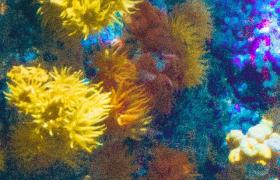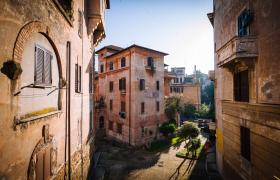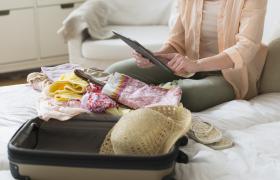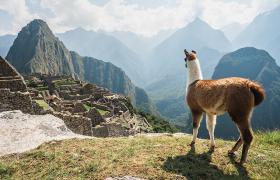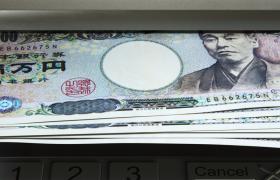With over 1,200 skyscrapers, you'd be forgiven for assuming Hong Kong was just a city. This is where you're wrong though, as the small but mighty region of over 230 islands also boasts beaches, national parks, marine parks and waterfalls.
Planning a trip to Hong Kong is exciting, especially as you begin to realise how much the city has to offer. Whether you are aiming to fit everything into a few days as a stopover, or you've got a longer itinerary to play with, one of the hardest parts of holiday planning is working out the budget.
If you're still in the dreaming stages and are wondering if Hong Kong is the place for you, or have already booked your trip and are keen to get down to budget business, the team at Travel Money NZ have got you covered. We've put together a nifty little travel budget calculator that combines Numbeo data and current exchange rates to give you an idea of how much to prepare for a trip to Hong Kong.
Before we get into calculations, let's chat about what is included in a Hong Kong travel budget.
What goes into a budget for Hong Kong?
Transport
Getting to Hong Kong has never been easier, with plenty of flights leaving New Zealand every day. You can expect to pay between $800 and $1500 for your return airfares, though if you're paying above $1200, it's worth waiting for a cheaper deal.
Once you arrive in Hong Kong, there are quite a few transport options. Straight up, traffic is crazy so hiring a car isn't the most practical choice. Instead, why not consider the following:
- Mass transit railway (MTR). The MTR is efficient, clean and covers all major HK districts. You can use this to get from the airport to the city in less than 30 minutes as well. It's worth noting that it can and will get hectic during peak hours, so limit your travel around these times if possible. We also recommend downloading the MTR app, it is super helpful for mapping routes and notifying you of any delays.
- Taxis: There are red, green and blue taxis in Hong Kong. The colour just shows which region the taxi covers, though all will travel to Disneyland and the airport. If you are catching a cab, take a business card with your hotel name and address to show the driver as most won't speak English. Drivers also aren't required to give change from notes, so have smaller change on hand to avoid paying more than necessary.
- Buses. Buses are slightly cheaper than the MRT, and most are double-decker. They cover the majority of the city, so are a great way to get your bearings and some incredible views. Remember that, if paying with cash, you must have the correct change.
- Minibuses: There are two kinds of minibuses, though both have no more than 19 seats. Green minibuses run routes with specific stops and charge fixed prices (so basically a standard bus). There aren't any buttons on the bus though, so you just need to shout at the driver when you want to get off. Red minibuses, however, run along routes that don't have specific stops, so you can get on or off anywhere you like. Fares aren't fixed, are paid when you disembark and will rise during peak hour or bad weather. Most minibus drivers won't speak English either, so perhaps avoid this option if it's your first time and you are overwhelmed.
- Tramways are an option on Hong Kong Island. Fares are 2.3 HKD and are an easy way to see the busy Northern Corridor of Hong Kong.
- Ferry. One of the most popular tourist attractions and means of transport in Hong Kong is the ferry between Kowloon and Hong Kong Island. Ferries frequently run every day and cost 2.5 HKD on weekdays and 3.5 HKD on weekends.
- Ride-share apps. You will be able to use several ride-share apps in Hong Kong. These are great value if you have a few people to transport; however, they can get caught up in traffic so it may be wise to avoid them if you're in a rush.
When it comes to paying for your public transport there are two main options:
- Get a tourist day pass that costs 55 HKD per day ($12NZD) and are valid for 24 hours of consecutive travel. Alternatively,
- Get an Octopus Card, which is rechargeable and can be used on the MTR and most other public transport, as well as make purchases in some supermarkets. The MTR fares are 5% cheaper with this card. The initial cost for the card is 150 HKD, which comprises a 50 HKD refundable deposit and 100 HKD worth of travel and purchases.
Accommodation
When choosing where to stay in Hong Kong, most travellers will ask the same questions: Hong Kong Island or Kowloon? If you're a first time visitor, we generally recommend Kowloon as there are more dining and entertainment options, and it is cheaper. However, if you are still tossing up between the two, here is a quick guide:
Hong Kong Island: The economic centre of Hong Kong, full of skyscrapers and luxury apartments. If you're travelling for work, this side might be your best option. The island also offers plenty of world-class restaurants, bars, galleries and shops. You'll also find the Peak, Aberdeen Fishing Village and Stanley market on this side.
Kowloon: This side boasts an incredible waterfront with the best views of the nightly Symphony of Lights Show. Kowloon is considered to be the entertainment and shopping hub of Hong Kong, with plenty of malls, parks, museums and boutiques to keep you busy. Kowloon has a broader selection of accommodation options (and prices) and is also home to heaps of markets.
Regardless of the side you stay on; it's worth considering the following when booking your accommodation:
- Is it close to a MTR stop or other public transport?
- What is included in the room rate? Will you get breakfast, or does the accommodation have a pool or restaurant?
- What do you want to see while in Hong Kong, and which side proves more convenient for this?
If all else fails, remember it is super easy to hop between both sides with the above mentioned public transport, so there is no need to worry about a sudden case of FOMO while visiting Hong Kong.
Food
Where do we even start? The food options in Hong Kong are vast and incredibly delicious. Its location means the cuisine has Asian and European influences, so you are bound to find something for every craving.
While food isn't as cheap as other Asian countries like Vietnam, China or Cambodia, you will no doubt find something that suits your budget. Street markets are a great option if you are seeking out rustic and inexpensive meals to fill you up. There are also plenty of high-end restaurants where chefs flaunt their creative flair and serve up the latest and greatest cuisines (with a price tag to match of course).
Here are a few tips for newcomers on the Hong Kong food scene:
- Breakfast is cheaper than other meals
- Market food, like noodles and dumplings, will set you back around 50 HKD.
- Sit down restaurants start at 100 HKD per meal and go up from there
- There are quite a few all-you-can-eat buffets for 110 HKD, which is an affordable way to fill up for the day.
- Bowls of rice generally aren't free, costing between 5 and 10 HKD.
- Be sure to visit the Temple Street Night Market for plenty of cheap and delicious food and an evening that will delight your senses.
- Find the cheapest Michelin Star Restaurant in the World at Tim Ho Wan and enjoy dim sum and a pork bun.
- You will be able to find and shop at supermarkets, though the prices at street markets are often 50% cheaper.
- There are 7/11's (or the equivalent) everywhere that sell basic supplies, some food and drinks. Most will have a microwave as well, so you can heat cheap meals like noodles if you are keen for a snack on the
- run.
- Lan Kwai Fong is a nightlife district with over 90 restaurants and bars.
Activities
Be sure to set aside some cash to splash on a few of Hong Kong's many activities. We've outlined a few below; however, it's also worth dedicating a day or two to exploring the city on foot to get a real sense of what makes Hong Kong so unique.
Must do Hong Kong activities:
- Visit Victoria Peak for a 360-degree view of Hong Kong. You'll need to catch the tram up (unless you're keen on a massive leg day and plan on conquering the stairs) which will set you back 99 HKD for a return trip.
- If you're travelling with kids (or a child at heart) Hong Kong Disneyland is a must. Adult admission will set you back around 619 HKD.
- Watch the Symphony of Lights from Kowloon waterfront (free) or jump on one of many harbour cruises. Prices will vary, so do a bit of research to see which option suits you best.
- Ocean Park is another theme park, slightly more geared to an older demographic than Disney. Admission is 280 HKD for an adult.
- Climb 268 stairs to see Big Buddha on Lantau Island. You'll need to take a cable car to get there, which is 125 HKD for a return ticket.
- EAT! Visit the night markets and eat until you can't eat any more. Hong Kong's food is an activity in itself that definitely can't be missed.
Pre-travel expenses
Kiwis don't need a visa for Hong Kong as a tourist; however, it is worth chatting to your doctor about any travel vaccinations you may need. Don't forget travel insurance as well, a must for all travellers regardless of the destination!


